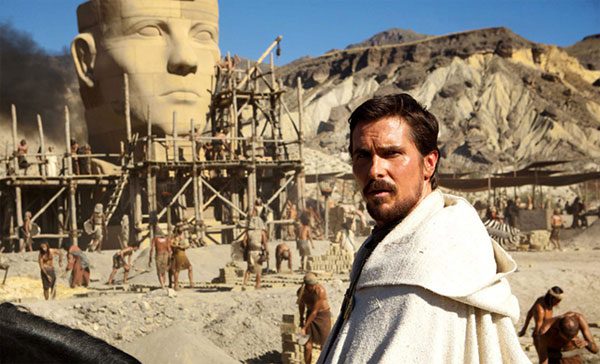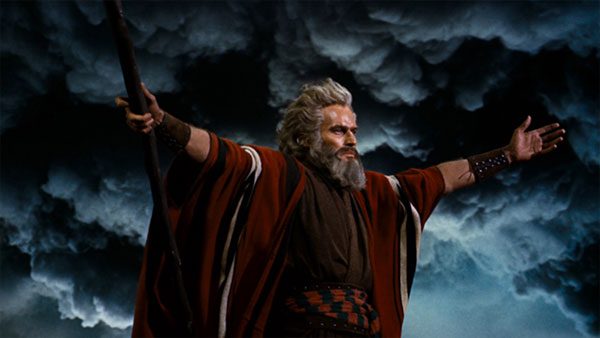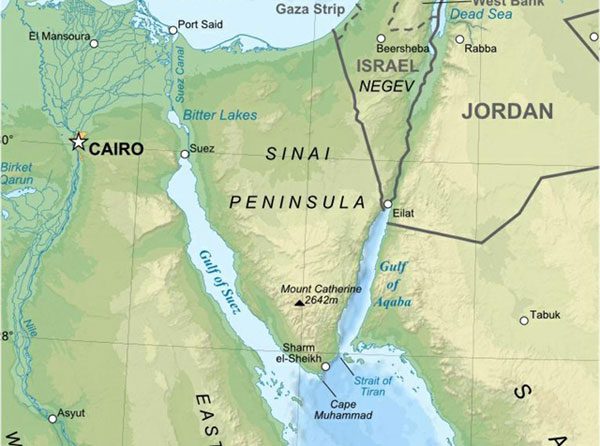The story of “Moses parting the Red Sea so that the Israelites could cross and then drowning the Egyptian pursuers” is a famous miracle in the Catholic Bible. This story has been widely disseminated over thousands of years and has been referenced in various literary and cinematic works as a demonstration of God’s power through the character of Moses. In light of scientific understanding, Dr. Parker from the National Oceanic and Atmospheric Administration (NOAA) attempts to explain this legend. He suggests that a unique tidal regime, combined with Moses’s geographical and astronomical knowledge, was the key to a bold plan. So how could one man part the sea? Was there a supernatural hand involved?

The character Moses in “Exodus: Gods and Kings”
Overview of the Story
Moses (Latin: Moyses, pronounced in Vietnamese as Mô-sê or Môi-sê) is a leader, prophet, and lawgiver in the Catholic Bible. He was called by God to lead the Israelites out of slavery in Egypt. According to biblical accounts, Moses was the son of a Hebrew woman and was adopted into the Egyptian royal family (during a time when Pharaoh had ordered the killing of Hebrew baby boys). After growing up, he was called by God to fulfill the mission of liberating the Israelites, crossing the Red Sea, entering the desert, and returning to the Promised Land.

The character Moses in Cecil B. DeMille’s 1956 film “The Ten Commandments”
During the journey, Moses used God’s power to perform many miracles, one of which was parting the sea, allowing the people to walk through the seabed and reach the other shore. Just as they reached the shore, the Egyptian army arrived, and Moses raised his arms over the sea, closing the walls of water to drown the entire army. This story has been the subject of many epic films, the most famous being “The Ten Commandments” by Cecil B. DeMille in 1956 and soon to be “Exodus: Gods and Kings” by Ridley Scott (scheduled for release on December 12, 2014), both referencing this miracle.
Ridley Scott’s “Scientific” Explanation
Scene of Moses’s people crossing the Red Sea in Ridley Scott’s “Exodus: Gods and Kings”
Director Scott stated that in this film, the story of “parting the sea” would be explored from a “more scientific perspective” rather than viewing it solely as a divine act. He explains that the parting of the sea was due to an earthquake causing a tsunami, and before the tsunami hit, the coastal waters would recede far out, leaving a temporary dry seabed. However, this explanation presents a problem: the time it takes for the water to recede before the tsunami arrives is only about 10 to 15 minutes, which is too short for the entire group of Israelites to cross the temporarily dry seabed.
Moreover, Moses would have had no way of knowing that an earthquake and tsunami were about to occur unless God had informed him. Of course, this scientific yet mystical explanation fits well within an epic film like “Exodus: Gods and Kings.” However, scientists have proposed various natural explanations for how a temporary path could form under the Red Sea. The key factor here is the tides, a natural phenomenon that Moses had calculated, coordinating with his bold plan. With this knowledge, Moses could predict when the “path” would appear.
From Profound Knowledge to Moses’s Bold Plan

Painting depicting Napoleon and his soldiers crossing the Suez Gulf on December 28, 1798, the location believed to be where Moses led the people across the sea
In reality, there are many locations around the world where the tides can lower significantly, exposing a stretch of land in the shallow seabed, creating a path for a few hours before the tide rises again, causing the path to quickly disappear. In 1798, French Emperor Napoleon Bonaparte and a group of his soldiers rode across the Suez Gulf (the northern tip of the Red Sea divided into two branches by the Sinai Peninsula, forming the Suez Gulf to the west and the Gulf of Aqaba to the east). This is also believed to be where Moses and his people crossed the Red Sea. At this location, when the tide receded, a dry stretch of land about 1 mile (approximately 1.6 km) was revealed, but then the tide suddenly rose, drowning many of Napoleon’s soldiers.
According to the account in the Book of Exodus (part of the Old Testament), the Israelites camped twice before crossing the sea, the last time on the western shore of the Suez Gulf. At that time, Pharaoh’s pursuers were close behind, and one could see the dust clouds raised by the chariots from a considerable distance. This was another important sign for Moses, helping him calculate how long it would take for the Egyptian army to reach the shore.
Moses had lived near the wilderness for a long time and knew which point on the coast would allow the travelers to cross the Red Sea when the tide was low. He possessed astronomical knowledge, observing the night sky, and through ancient methods, he could predict tidal activities based on the position and phase of the Moon. In contrast, Pharaoh and his advisors lived along the Nile River, connected to the Mediterranean Sea, where the tidal differences are minimal, only a few centimeters. Thus, Pharaoh’s army had very little understanding of the tides and were unaware of the danger they faced.

Map of the Suez Gulf area
By predicting when the tide would recede, when the land would appear and for how long it would last, as well as when it would suddenly disappear, Moses could effectively plan the escape for the Israelites. Thus, he chose the full moon for the crossing since, at that time, the time between high and low tides is greatest, giving the group more time to cross. At the same time, it is also when the tide is lower than usual, and the high tide is higher than normal, making it suitable for drowning Pharaoh’s army.
Timing was crucial for the plan to work perfectly. Moses had to calculate so that the Israelites would just cross the dry land as the tide began to rise. The Egyptian army, hot on their heels, would fall into the trap. If the cavalry and chariots caught up before the tide rose, Moses would have prepared some delaying tactics. Conversely, if the pursuers arrived after the tide had risen, many would have crossed the sea safely, and Moses could send some of his people back into the seabed to lure the pursuing army to ensure their defeat.

The place where Moses’s people crossed the Red Sea
The Bible mentions strong east winds blowing all night, pushing the waters to both sides. Ocean physicists state that winds blowing over shallow currents carry more water than when blowing over deep waters. Therefore, this strong wind blowing throughout the night would help lower the water level further, providing additional opportunities for Moses’s plan to succeed. For centuries, it has been believed that this wind’s occurrence was divine intervention to assist the people. However, it is still unclear whether Moses knew of the advantages brought by the wind. But one thing is certain: he considered tidal forecasting to be a decisive factor.
When Napoleon and his soldiers nearly drowned in 1798 at the northern point of the Suez Gulf, the water level during low tide was about 1.5 to 1.8 meters (up to 2.7 to 3 meters if the wind blew in the right direction). However, evidence suggests that the sea level during the time of Moses was higher compared to when Napoleon crossed the sea. Therefore, the Suez Gulf would have extended further north, and the tidal range would also have been greater. If this is true, then at high tide, the “wall of water” could have completely submerged the Egyptian army, as documented in the Bible.

Illustration of Moses leading the Jewish people across the sea
If indeed all the events in Moses’s plan unfolded as hypothesized, he would deserve to be recognized as a great tidal forecaster in history, not merely as a performer of divine miracles. Perhaps God created a strong wind that blew throughout the night to help complete the plan, but according to the evidence, it is clear that the majority of the plan was devised by Moses based on his profound knowledge and experience. This entire story has been written by Dr. Parker in the book: “The Power of the Ocean: Tsunamis, Storm Surges, Rogue Waves, and Our Mission to Predict Natural Disasters.”





















































